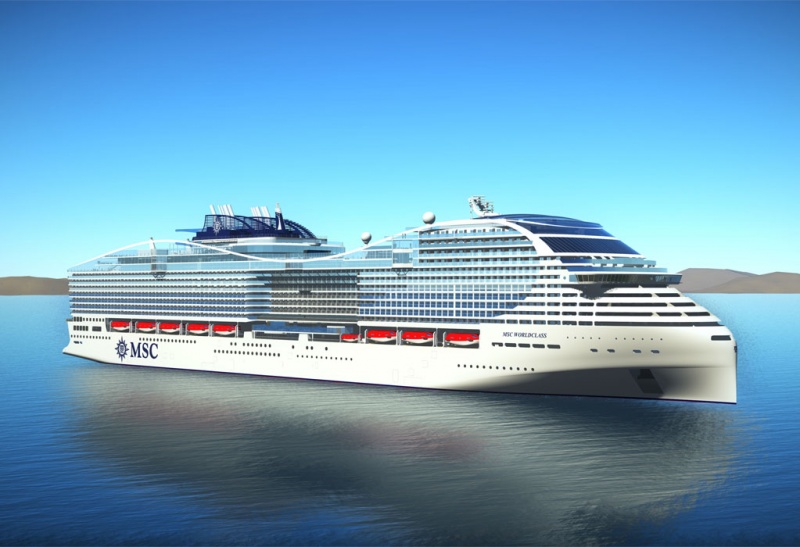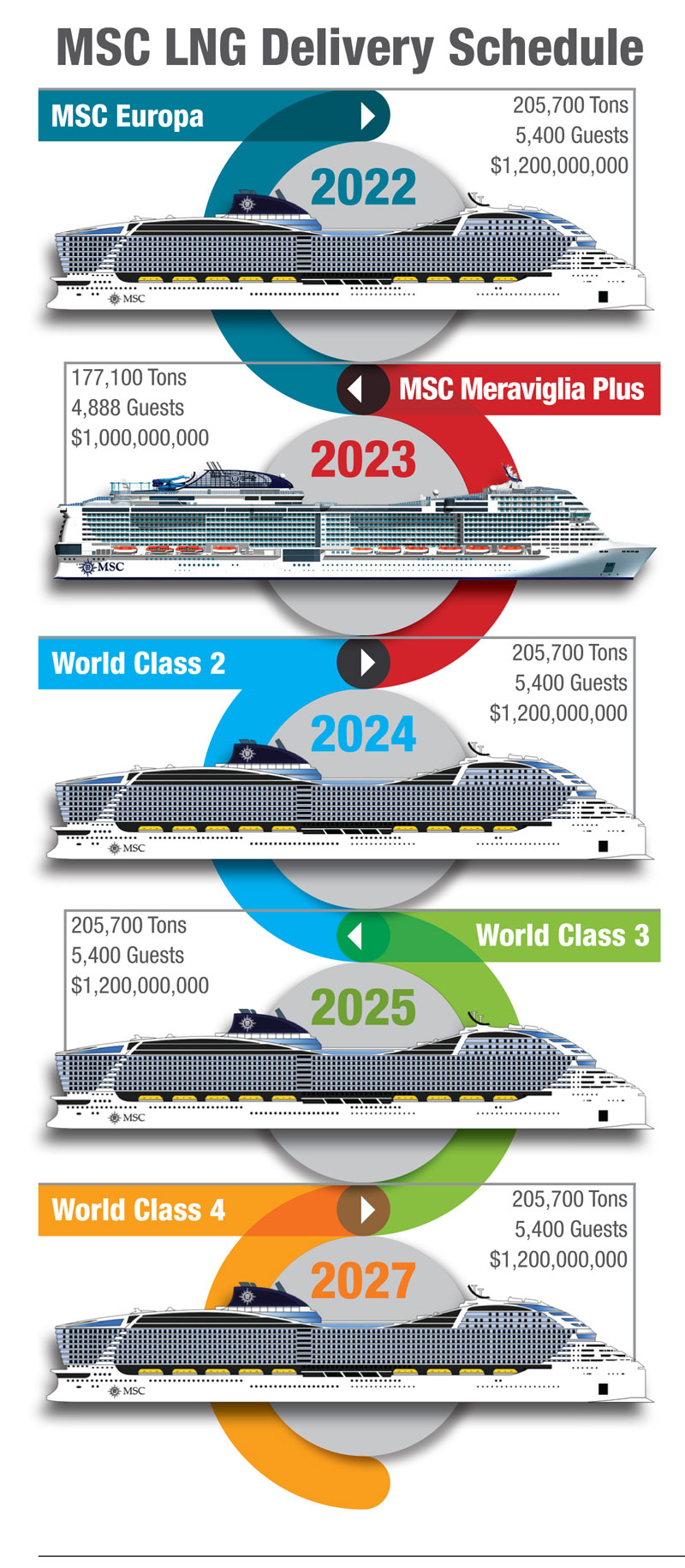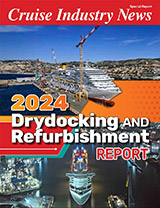
Spending well over $5.5 billion on five new LNG-powered ships, MSC Cruises is under three years out to the first 200,000-plus ton World Class vessel coming in 2022, the MSC Europa.
“There is no one single answer (to the bunkering process), because the supply chain has to be developed in most of the places we expect to operate in,” said Bud Darr, executive vice president of maritime policy and government affairs. “We are in discussions with multiple suppliers … in places where there is not a delivery mechanism available it takes a lot of lead time, and some give and take between supplier and user.”
The goal? Create sufficient certainty in the supply chain, Darr said.
MSC is in discussions with multiple ports on LNG bunkering, looking for destinations that have or can develop processes and procedures, locating and securing a supply of LNG, and also the delivery mechanism – most likely a barge.

“The barges themselves are complex to build and build correctly,” Darr continued, adding the scenarios look very different from port to port.
Cost goes beyond just the fuel supply, and into the delivery. Bunkering times are longer due to setup and breakdown, although MSC expects to be able to bunker LNG during the time allotted for regular turnaround call.
With supply chain solutions from Carnival Corporation in place in Europe and soon South Florida, could the companies share?
“It could be possible,” Darr answered, noting that capacity is constrained, with barges only able to serve one ship at a time for a hours-long bunkering process.
“The potential is there to have conflicting demands for one barge.”
Essentially, it’s one big puzzle for MSC to solve, also making sure the owner and operator of the barge is either the fuel supplier, or has the relationship to keep the LNG flowing.
One of the fastest-moving companies in the industry, could MSC be poised to be the first to retrofit a modern cruise ship to run on LNG?
“Everyone that is inclined to use LNG and has also looked at refits. The conclusion we came to, which is what most cruise ship operators have come to, is that it is extraordinary difficult to see how a retrofit of a LNG-fuel system would work for an existing ship,” Darr answered. “It’s an extremely complex undertaking so unless you were going to do something really significant, like install a mid-body the opportunities to do that are just not as great.
LNG will provide MSC’s vessels with a 20 percent reduction in CO2-equivalent emissions.
“It’s the best option we have right now,” he continued. “To sit back and do nothing and just wait for new regulations and wait for a next generation of technology that may be 10 or 20 years away is not acceptable. We have to do what we can do now to reduce CO2 emissions.”
Excerpt from Cruise Industry News Quarterly Magazine: Winter 2019-2020




